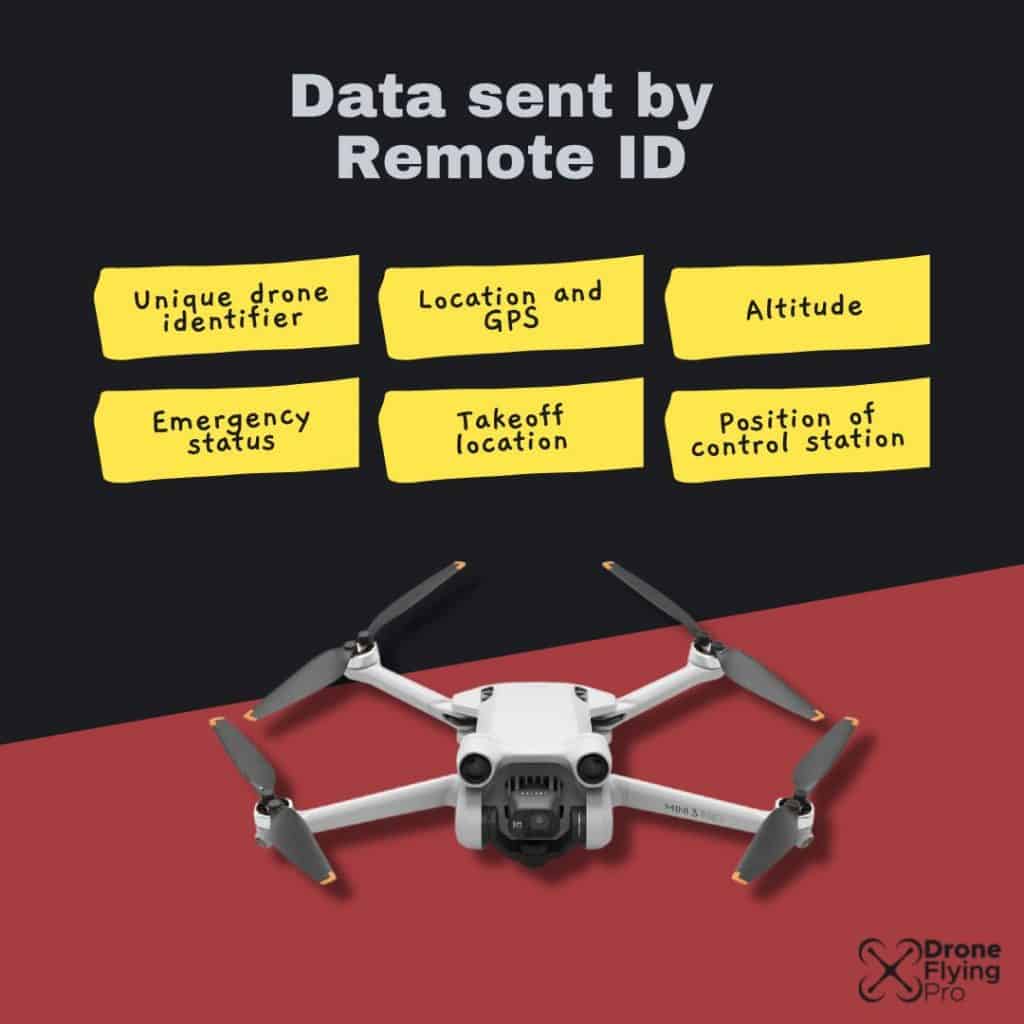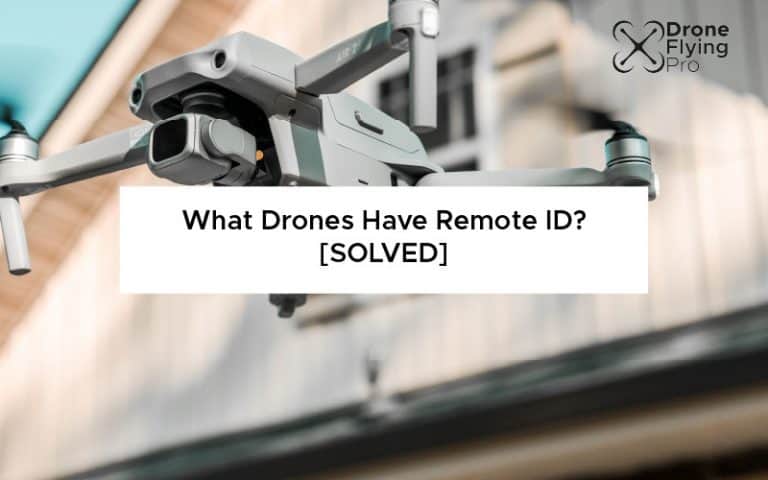You may have heard that more and more drones are becoming fitted with remote ID to comply with rulings from the Federal Aviation Administration in 2021 – but what do these rules mean, and are there any drones out there with built-in mechanisms?
While built-in remote ID is still a new feature to be added to drones, there are plenty of drones, especially from DJI, that are already complying with the FAA’s standards. In fact, some of the biggest drones such as the DJI Mavic 3 are now available with remote ID. This will help them comply with federal rules and make the airspace safer in the longer run.
There are many questions out there that drone enthusiasts and pilots have when it comes to remote ID, so this article is the perfect resource to learn more! Keep reading for an explanation of remote ID, how to find built-in remote ID drones, and why remote ID matters!
What Is Remote ID?
Remote ID is a process through which airborne drones can provide identification data, amongst other things, to other devices and parties, particularly so they can be tracked and abide by federal rules.

The reason behind this feature is that, as drones become more prevalent, it becomes increasingly important to be able to distinguish them from other aircraft. There are a few different ways that Remote ID can be accomplished.
One is by the drone broadcasting its location and other necessary identifying information via radio frequency. Another is for the drone to be equipped with a transponder, which is then read by ground infrastructure like Air Traffic Control towers.
What Drones Have Built-In Remote IDs?
So far, there are only a handful of drones that have been built with Remote ID in mind from the start. Since there are modules that can be installed on pre-existing drones, it will take some time for this technology to be widely available for all drones.
However, here are some drones with built-in remote IDs:
- DJI Air 2S
- DJI Avata
- DJI M30
- DJI Mavic 3 Cine
- DJI Mini 3 Pro
Here’s a video explaining what types of drones are compliant with remote ID rules:
Why Does Remote ID Matter?
The inclusion of Remote ID on drones is seen as a necessary step in integrating them into the national airspace. Without it, there would be no way to track or manage the increasing number of drones in the sky, which could pose a serious safety hazard.
In addition, Remote ID can help law enforcement agencies track down and prosecute anyone who is operating a drone in an unsafe or illegal manner. Without this data, it would be much more difficult to identify and punish offenders.
What Are The Remote ID Rules?
So far, the FAA (Federal Aviation Administration) is the only agency that has released rules on Remote ID for drones. The rulings are still changing, but they do require drones to be equipped with Remote ID technology before they can be operated in controlled airspace.
It is expected that other countries will soon follow suit and release their own regulations on Remote ID, as it is seen as a key step in ensuring the safe and responsible use of drones. Drone fliers are expected to comply with the following guidelines:
- Fly a drone with built-in remote ID: This means that the drone should be able to transmit information about its location, where it is being controlled from, and the identification of the drone.
- Fly a drone with broadcast remote ID: Unlike the first drone, this one does not have a built-in system but is retrofitted with a module to broadcast identifying information. However, this device can only be flown as far as the eye can see.
- Fly a drone without remote ID at specific locations: The FAA has recognized identification areas known as FRIAs, which are provided to educational institutes and community-based organizations. Here, remote ID is not necessary for flying.

Here is the information drones are expected to broadcast:
| Built-In Remote ID Drones | Drones With Remote ID Modules |
| Unique Identifier (serial number or session ID) | Unique identifier (serial number) |
| Drone’s location (coordinates, velocity, and altitude) | Drone’s location (coordinates, velocity, and altitude) |
| Control station location (coordinates, velocity, and altitude) | Control station location (coordinates, velocity, and altitude) |
| Time stamps | Time stamps |
| Emergency status (optional) | – |
A look at what FAA rules require from drones in terms of remote ID
How Will Remote ID Affect Drone Enthusiasts?
The main impact of Remote ID will be felt by drone enthusiasts who want to fly their drones in controlled airspace. In order to do so, they will need to ensure that their drone is equipped with the appropriate technology.
While this may seem like a nuisance, it is important to remember how this change can result in a huge impact on the safety of drone flying. For drone enthusiasts who do not have drones with built-in remote ID, there is a need to immediately install modules so they comply with federal regulations of safety.
For everyone else, the main change will be an increased awareness of the presence of drones in their vicinity. With Remote ID, it will be possible to track and identify nearby drones, which could help improve safety and security.
Overall, the incorporation of Remote ID is a major step forward in ensuring the safe use of drones. It will help to track rogue drones and ensure that those who are flying them are doing so responsibly.
In the long run, this will make it easier for everyone to enjoy the benefits of drone technology without having to worry about safety hazards.
Conclusion
The Remote ID technology is a great way to improve the safety of drones. However, it is important to remember that this is just one step in a long journey toward fully integrating drones into national airspace.
There are still many challenges that need to be addressed, however, the implementation of Remote ID is a major step in the right direction and will help to make sure that drones are used safely and responsibly.




